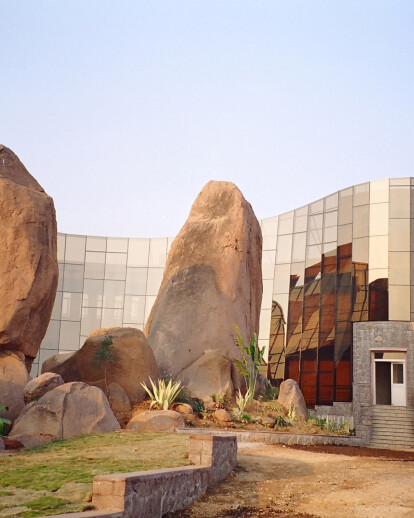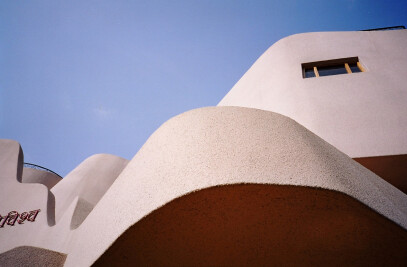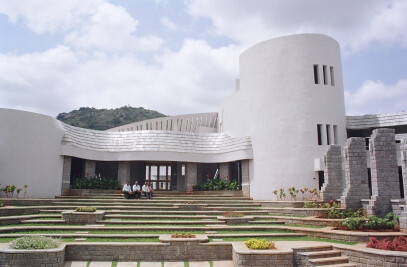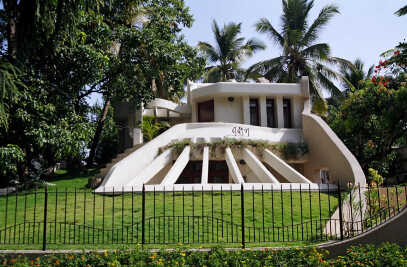The Government of India wanted to set up a unique laboratory for the conservation of endangered species through research on reproductive biology and in-vitro fertilization. This design responds to this attitude of respecting and restoring Nature and its biodiversity. On his very first visit to the site, the architect struck a dialogue with the grand, beautiful cluster of large rocks on the edge of this site. He requested the clients to acquire more land around the rocks to make them an integral part of his design- creating a strong symbolic context.
This initiated a design process that rejuvenated the spiritual bond between man and nature and paid its homage to nature- by honoring and preserving (from rampant vandalism and exploitation) this millions of years old natural heritage. by creating an organic built form with broken stone masonry and an ephemeral glass façade that keeps changing at different times of the day- reflecting the sky, the rocks and the gardens. The rocks, greens, the people and the building fuse into one beautiful inseparable spatial relationship. by creating humane, natural interactive spaces that help in creating a symbiotic brotherhood between man and man, the manmade and the natural. by reducing our footprint on earth-
- With a sewage treatment plant to get recycled water for landscaping - With rainwater harvesting tanks to save water. - With good day lighting and natural ventilation, energy needed for lighting and air conditioning is reduced. - With thick masonry and good shading of outer walls, and with a buffer service zone between the glazed passage and the air conditioned laboratories, the A.C. load is reduced. - By not importing any stone for foundations, walls, compound walls, roads, etc. Only stone obtained from this site is hand-dressed by local labour. - By planting a lot of new trees and preserving the old ones.

































